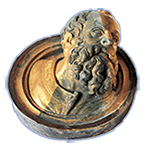Speaker
Description
The riskiest part in the restoration process of paintings is the removal of the old varnish layer. It is subject of controversy between supporters of total removal and supporters of the patina. To remove varnish, the restorer applies solvents and abrades the surface. Often the solvents penetrate into the deeper layers and weaken the structure of the pictorial layer. Essential elements can be extracted. Every year many paintings are being damaged by too thorough cleaning, therefore it important to find solutions to this destructive problem. Many groups are working on this issue but it seems missing an essential element: the comprehension of the fundamental physics governing the restoration process. Understanding the basic polymer physics that underlies these processes will allow designing automated restoration methods that will be completely innocuous to the works of art. In this contribution we will focus on results obtained by neutron reflectometry, chosen because we can measure directly the composition of thin films at liquid interfaces with a resolution of a few Å. We will present recent results, obtained on the FIGARO(ILL) and N-REX(MLZ) reflectometers where we determined the depth profile of solvent in synthetic varnish films usually used by art restorers. We will present the extent and type of varnish swelling just before rupture of this film. The prediction of film rupture will help to ensure a 'safe' restoration process, which will not alter the fragile colored layer.

